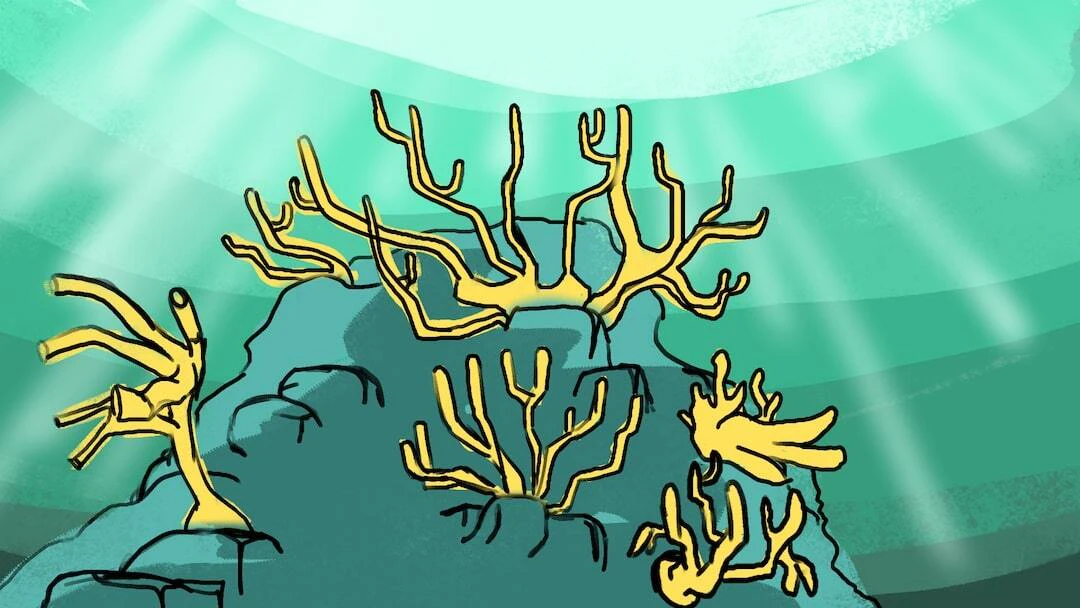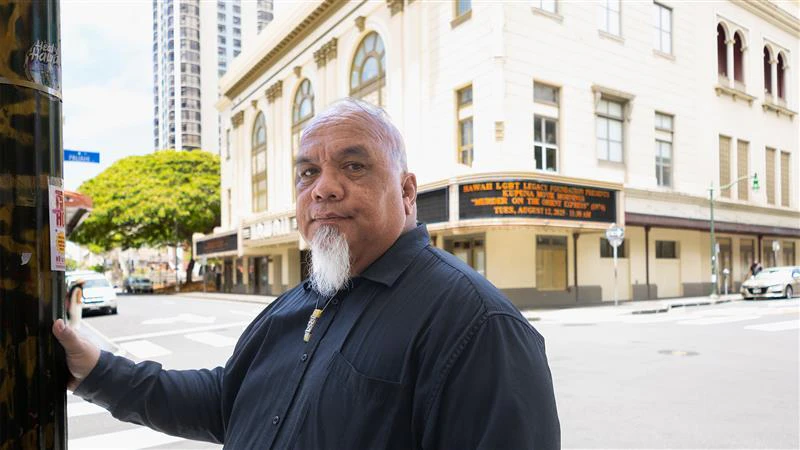Screenwriter Thomas Paʻa Sibbett was working as a lifeguard at Secret Island on Kualoa Ranch about two decades ago, when he decided to write movies. He heard Sony Pictures was planning to do a story about King Kamehameha.
“I had never thought of myself writing movies. I didn't even consider myself a writer, but it was like a little light went off in my head,” he told Aloha State Daily. “I just had this weird thought: ʻWell, if Hollywood wants a Hawaiian story, I can do that.’”
He bought the book, “Writing Screenplays that Sell.” In fact, it is still in his bookcase, he said, holding it up in a Zoom call with ASD.
“I don't even know if it's considered the type of book that could help build a career,” he said. “But I bought one book, and I learned the format, and I just started writing.”
Now, Sibbett is a screenwriter for movies such as “Braven,” “The Last Manhunt,” and “Aquaman and the Lost Kingdom.” Recently, he teamed up with Jason Momoa to share the Apple TV+ mini-series “Chief of War," which will release its season finale on Friday, Sept. 19. The drama tells the story of the unification of the Hawaiian Islands under King Kamehameha from the perspective of Kaʻiana, a chief who traveled the world.

“It's understandable that Kamehameha’s story is commercially viable, right?” Sibbett said. “To the non-Hawaiian, it totally makes sense. His story is amazing, the story of unification and all of that. The problem that Jason and I had is that — as Hawaiians — we just felt like it would be extremely hard to pull off just because there's the nature of Kamehameha. As the one who united the Islands, he's either a hero, and in some cases, he's basically been deified as this amazing warrior and great leader and military tactician and lover of his war god and so very religious, but then on the flip side, if let's say you're on the receiving end of that, like families from locations that were conquered by Kamehameha, then they don't have the same reverence for it.”
The duo has family history on both sides of the war. Momoa’s middle name goes back generations and is the name of the brother of Kaʻiana, the very character he plays in the series. Sibbett traces his lineage back to King Kahekili, who controlled Maui.
“Jason and I are on opposite sides of the war here,” he said. “And it was our lineages that came together to tell the story.”
Kaʻiana joined European sailors and traveled to Zamboanga and Alaska, as he does in the series.
“Today, Kamehameha is the most famous Hawaiian around the world,” Sibbett said. “If you know a Hawaiian historical figure, it's Kamehameha. That's the way it is. But in the days of Kamehameha, the most famous Hawaiian around the world was Kaʻiana, because Kaʻiana traveled the world.”
Sibbett and Momoa had talked about sharing the story about Kamehameha via film more than 10 years ago, he said. But they wanted to each grow more in their crafts before taking on this project.
“I remember when we first talked about it,” he said. “I remember telling him for the very first time, putting the name Kaʻiana in his ear, and Jason goes 'F— .' He goes, ʻWe are definitely doing that.’ But he understood, and it was part of our conversation, that his star hadn't risen high enough yet. ... Jason needed to prove himself as an international movie star, which is a huge feat, in and of itself. And then I also had to prove that I could carry the weight of creating and developing a story at this size.”
Sibbett’s education in Hawaiian studies at Brigham Young University – Hawaiʻi, helped him learn stories that found their way into the plotline of the current series, he said.
“The hōlua sled race in episode five?” Sibbett said. “That story was told to me by my professor at school, Uncle Bill Wallace, and he had told me about a track on Molokai that they had uncovered that goes off of a 200 foot cliff. ... I thought that was so cool. When I started developing the story, I was like: ʻWell, they may not have that track on Big Island, but I'm definitely putting that in the show.’”
The show did not have a writer’s room. In fact, after getting the green light for the project, Sibbett and Momoa started work immediately. When Doug Jung was hired as the showrunner four months later, they shared a first draft of eight episodes, he said.
There is “no guarantee” of a season two, he said.
“We need people to watch the show,” he added. “We need the support of the show to grow, just to give the studio confidence that the show can continue and that it will be economically viable to do. I will say this: if you're enjoying season one, season two is way better.”
"Chief of War” is set mostly in Hawaiʻi and the team had wanted to film it entirely on the Islands but took some of it to New Zealand for budgetary reasons, Brian Keaulana, one of the producers, told ASD earlier this year. Sibbett recalls filming the season finale with a battle set on lava fields on Hawaiʻi Island.
“We're telling the story of a battle in which this volcano erupted,” Sibbett said. “Now, the volcano actually erupts the morning we are supposed to start shooting. ... The volcano was present for every day we were shooting the sequence of the lava battle.”
After the wrap party, Sibbett woke up the next morning and learned it had stopped.
“From the morning we were shooting to the night we ended, the volcano's presence was active and alive,” he said. “And I remember thinking that we, as kanaka people, talk about the island being alive, and that there's life — there's mana — in all living things. But it made me realize that the island is not only alive, but it has a memory. As we were honoring it, then it honored us in return and allowed us to feel of the mana, so that we were more connected to the story.”
For the latest news of Hawai‘i, sign up here for our free Daily Edition newsletter.
Katie Helland can be reached at katie@alohastatedaily.com.





